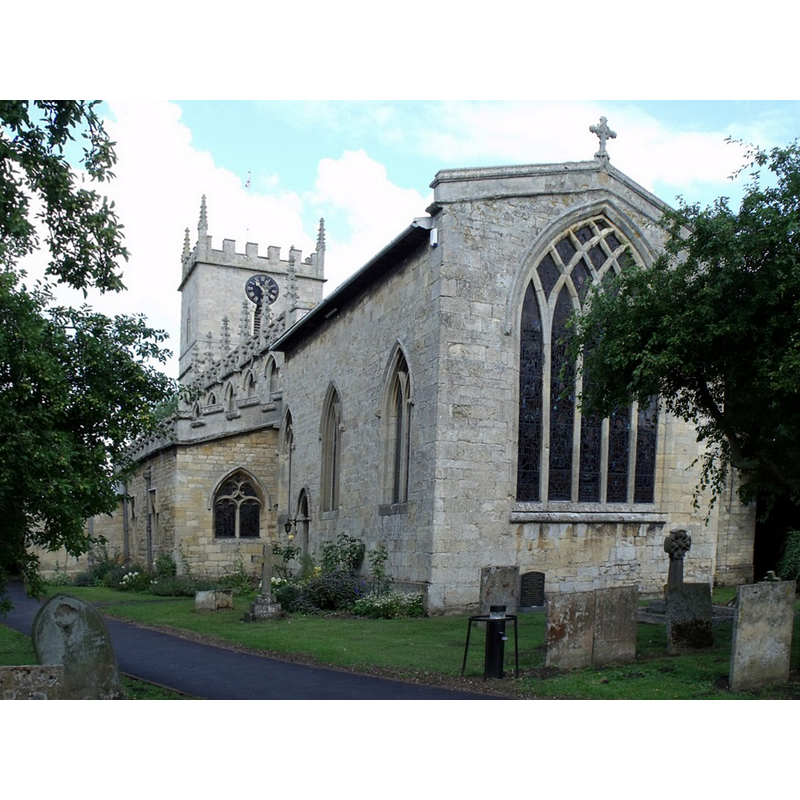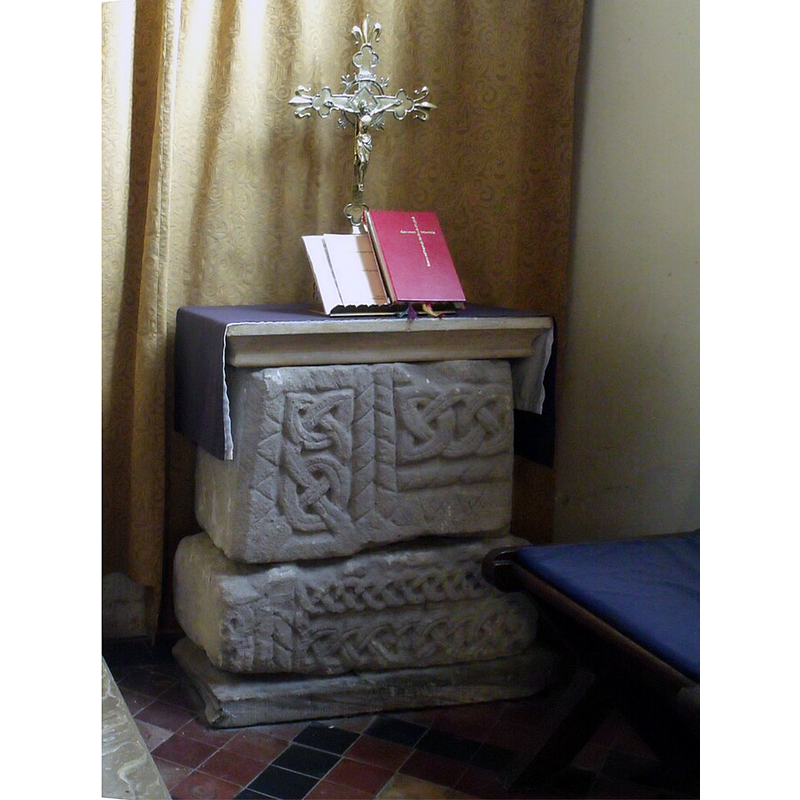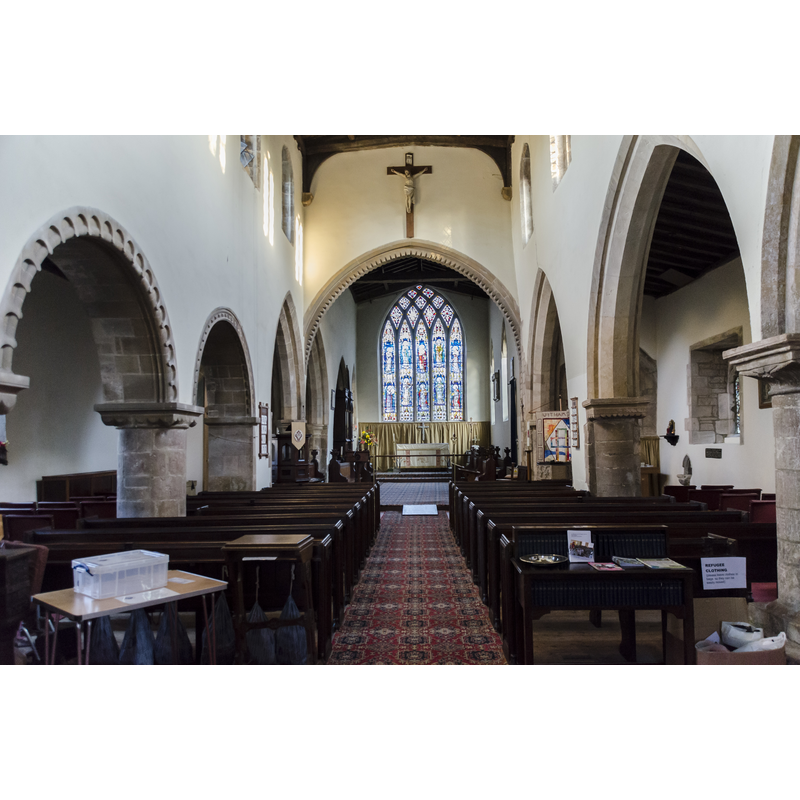Bassingham No. 1 / Basingeham
Results: 5 records
view of church exterior - southeast view
view of church interior - altar
Scene Description: Source caption: "Saxon Stones near the Altar, Bassingham church".
Copyright Statement: Image copyright © J. Hannan-Briggs, 2011
Image Source: digital photograph taken 19 November 2011 by J.Hannan-Briggs [www.geograph.org.uk/photo/2709111] [accessed 18 June 2018]
Copyright Instructions: CC-BY-SA-2.0
view of church interior - nave - looking east
Scene Description: Source caption: "Interior, St Michael's church, Bassingham. The church dates from the 11th century, the tower was rebuilt in 1782,(there are 6 bells) and the church was restored in 1860.The north aisle is of three bays with round Norman arches, the south has two bays.The chancel was rebuilt in 1835 incorporating older material. Pevsner describes the chancel arch as "terrible". The south porch is Victorian. The font dates from the 13th century."
Copyright Statement: Image copyright © Julian P Guffogg, 2016
Image Source: digital photograph taken 15 January 2016 by Julian P Guffogg [www.geograph.org.uk/photo/4793927] [accessed 18 June 2018]
Copyright Instructions: CC-BY-SA-2.0
INFORMATION
FontID: 09912BAS
Object Type: Baptismal Font1
Church/Chapel: Parish Church of St. Michael and All Angels
Church Patron Saints: St. Michael & All Angels
Church Location: Newark Road, Bassingham, Lincoln LN5 9HA, UK -- Tel.: 01522 788383
Country Name: England
Location: Lincolnshire, East Midlands
Directions to Site: Located off (E) the A46, 15 km SSW of Lincoln
Ecclesiastic Region: Diocese of Lincoln
Historical Region: Hundred of Graffoe
Font Location in Church: Discovered buried beneath the church floor
Century and Period: 10th - 11th century [re-cycled font?], Pre-Conquest
Church Notes: The church itself starts in pre-Norman times and is added to considerably up to the 15th century
Font Notes:
Click to view
There is an entry for this Bassingham [variant spelling] in the Domesday survey [http://opendomesday.org/place/SK9059/bassingham/] [accessed 18 June 2018]; the entry mentions a priest and a church in it. Stocker (1997) notes this as one of five early "fonts discovered buried beneath church floors (at Bassingham, Cabourne, Covenham St Mary, Ewerby and Folkingham)" in Lincolnshire. "The stone was originally a large 10th-century tomb-chest, which was cut into sections (perhaps in the 12th or 13th century). One of these sections was hollowed out to form a tank which was probably used as a font [...]. The recuting for this purpose is deliberate and careful and it seems likely that the original decoration was considered to be important in its secundary function [...] It ceased to be a font, presumably, in the late-medieval period (the present font is late 14th- or 15th century), when it was reverently buried in the nave floor" (Stocker (1997). In Stocker's listing, this font appears also under the heading "List 4) Provisional list of fonts reusing Anglo-Saxon carved stones". This object is not mentioned in Pevsner (1989). The entry for this church in Historic England [Listing NGR: SK9080659732] mentions a "Octagonal C15 fort [i.e., font] with quatrefoils" in it. The entry for this church in the CRSBI (2018) mention no font or stoup in them.
COORDINATES
Church Latitude & Longitude Decimal: 53.12715, -0.6444
Church Latitude & Longitude DMS: 53° 7′ 37.74″ N, 0° 38′ 39.84″ W
UTM: 30U 657608 5889007
MEDIUM AND MEASUREMENTS
Material: stone
Font Shape: rectangular
Basin Interior Shape: rectangular
Basin Exterior Shape: rectangular
REFERENCES
Cole, R.G.E., "Notes on the Ecclesiatical History of the Deanery of Graffoe to the Close of the 14th Century", XXIV, II, Assoc. Archit. Soc. Rep. Pap., 1898, pp. 381-448; p. 387
Stocker, D.A., "Fons et origo: The Symbolic Death and Resurrection of English Font Stones", I (1997b), Church Archaeology, 1997, pp. 17-25; p. 17ff, 23, 25




